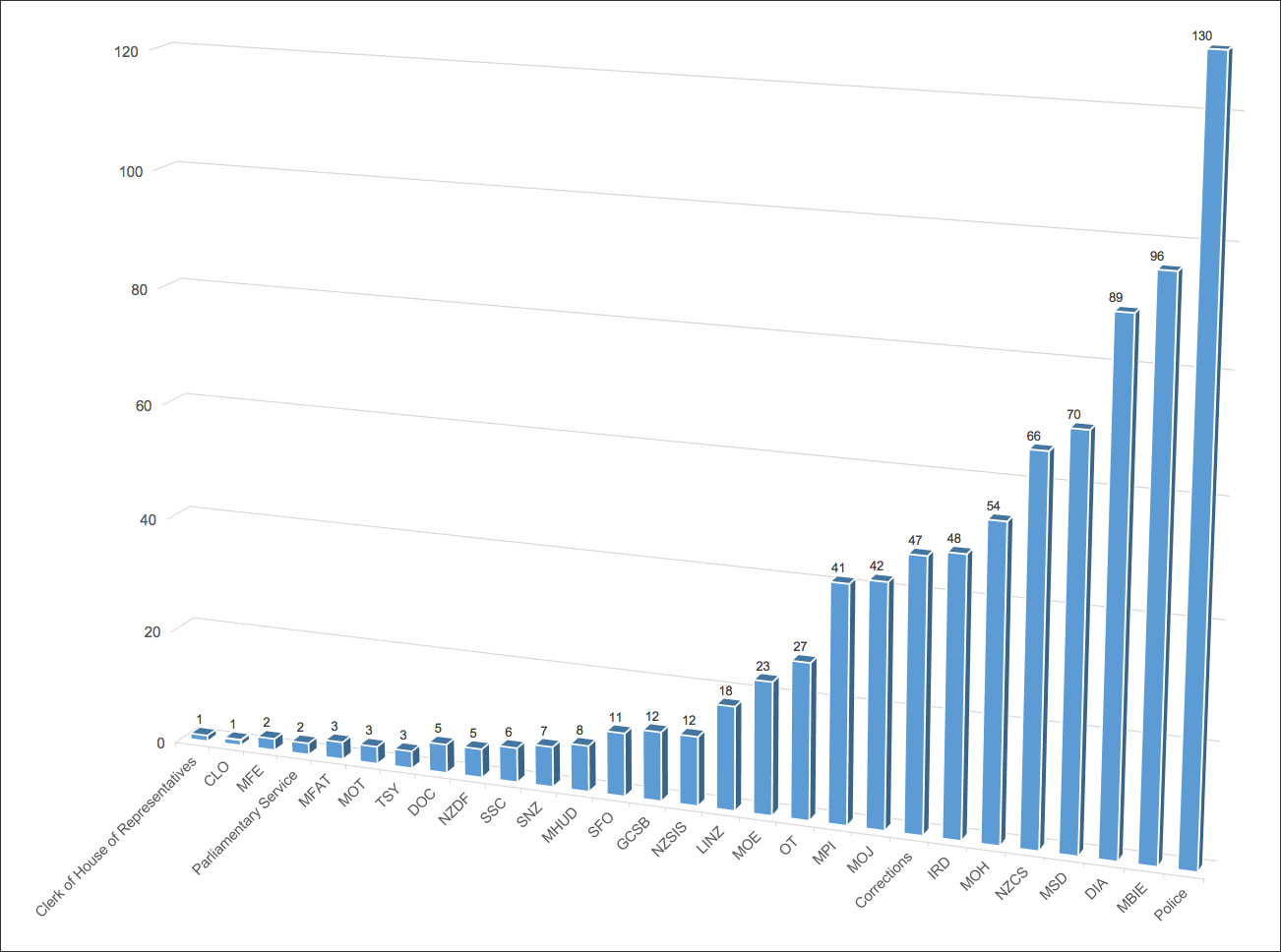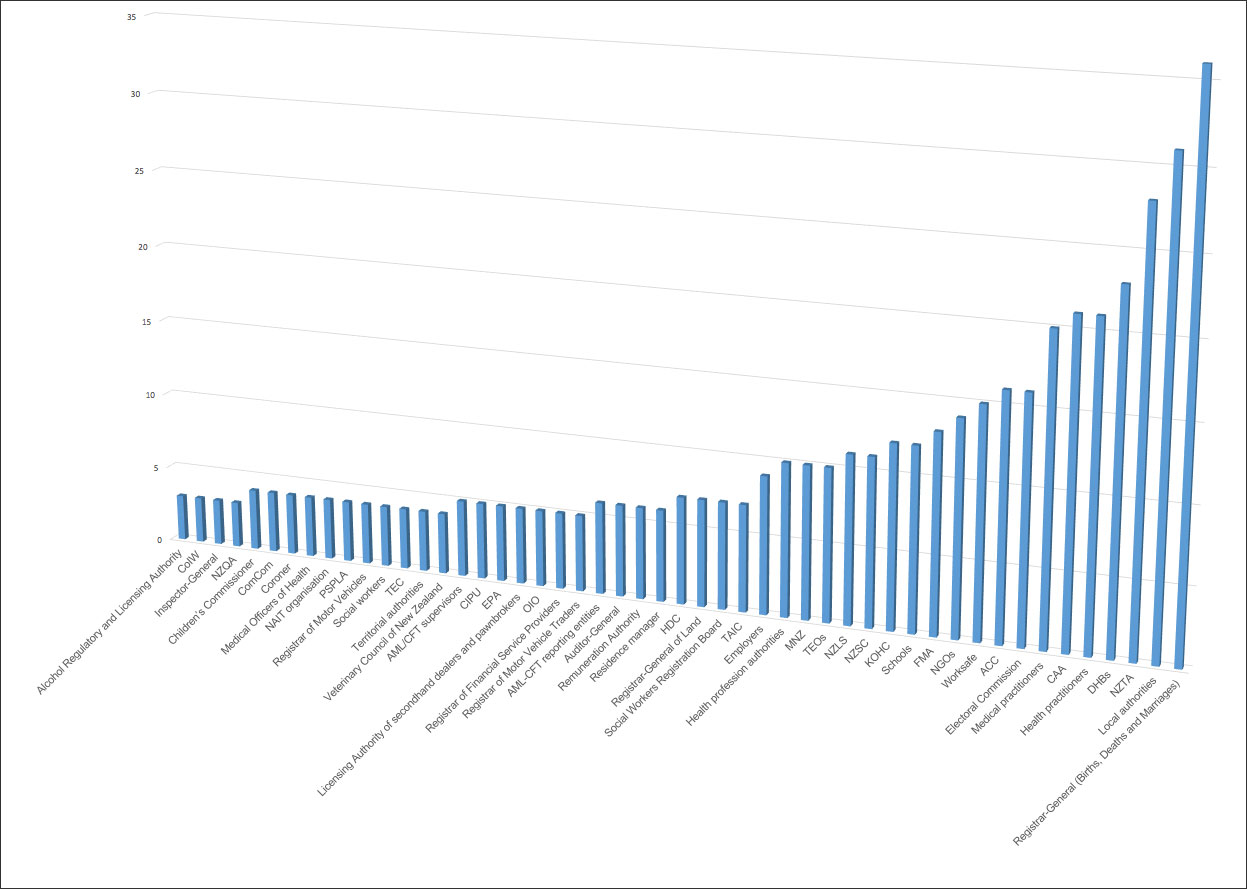If you’ve read “Why we need to understand more than the Privacy Act“, you’ll know my view that we cannot fully understand how New Zealand law addresses the collection, use and sharing of personal information by understanding the Privacy Act alone. To obtain a full understanding, we often need to understand other laws and how they interact with the Privacy Act.
That’s all well and good, but just how many specific statutory provisions are there in our statute books that address or, given their breadth, could cover the collection, use and sharing of personal information?
Provisions affecting Government departments
Here’s my take on it to date in relation to departments of the Crown. On the horizontal axis, you can see each public service and non-public service department of the Crown that is named in specific statutory provisions of the kind mentioned above. On the vertical axis, you can see how many such provisions there are.

So, as you can see, the top 10 departments (whether public service or non-public service) are:
- Police
- Ministry of Business, Innovation & Employment
- Department of Internal Affairs
- Ministry of Social Development
- New Zealand Customs Service
- Ministry of Health
- Inland Revenue
- Corrections
- Ministry of Justice
- Ministry for Primary Industries
Some points to note about the data:
- The numbers are based on my summaries of all these provisions (yes, I’ve reviewed all New Zealand’s public Acts, which proved to be a mammoth task). In the majority of cases, there’s a single summary per provision. However, in some cases, it makes sense to group provisions in a single summary. This is because they’re closely related or because the entry is summarising a complex weave of provisions or a complex legislative regime replete with information-related provisions (such as the Mental Health (Compulsory Assessment and Treatment) Act 1992). For this reason, the counts per agency do not necessarily equal number of provisions. They do represent a minimum number of provisions but, where multiple provisions are addressed in a single summary, the actual count of provisions will be higher.
- For the most part (but not completely), I’ve excluded provisions that relate to disciplinary hearings, tribunal and court powers, and crimes and criminal procedure (from bail, to trial, to sentencing, to parole). One reason for this is that disciplinary bodies, tribunals and courts usually have wide-ranging powers to request or order the production of information (including personal information) relevant to the cases before them. That is well-known and has not been my focus. My focus has been on more or less everything other than disciplinary hearings, tribunal and court powers, and crimes and criminal procedure.
- I’ve also excluded most search warrant provisions, for similar reasons.
What about non-Crown agencies?
I also have data on provisions naming non-Crown agencies (whether public or private sector). The graph below shows the data on the top 50 non-Crown agencies. As with the previous graph, on the horizontal axis, you can see each agency that is named in specific statutory provisions of the kind mentioned above. On the vertical axis, you can see how many such provisions there are. The same points or caveats I’ve mentioned above apply to the data here as well (if the image is a bit small, click on it).

More to come
I’ll be talking more about these and related data in upcoming posts. Feel free to sign up to my mailing list if you’d like to be informed when I release a new one.
